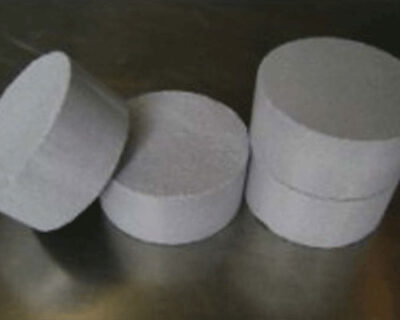Nearly 85% of the total aluminum consumed is in the form of aluminum alloys. When smelting aluminum alloy, various metal additives need to be added to make aluminum alloys with different compositions and models to meet different performance requirements. Commonly used elements are silicon, iron, copper, manganese, titanium, magnesium, chromium, tin, boron, rare earth, etc. For alloy element additives with low melting point and high solubility in aluminum, such as magnesium and zinc, they are mainly added in pure metal. Metals with higher melting points, such as silicon, iron, and manganese, are added in the form of intermediate alloys. However, the energy consumption in the production of intermediate alloys is very high, especially in the aluminum alloy preparation process, the loss of alloy elements is increased, and the waste is extremely large.
Aluminum Alloy Additives
Aluminum alloy additives can achieve a high absorption rate at a relatively low temperature (710-720°C), and the dissolution rate is fast. The added potassium cryolite can not only promote the absorption of alloy elements, but also play a role in removing slag. The addition of potassium fluorosilicate can not only expand the additive block, but also release protective gas, which is conducive to the degassing of the aluminum liquid and further improves the purity of the aluminum liquid. Therefore, the aluminum alloy additive has high absorption rate and stability, and at the same time has the melt purification ability of degassing and slagging.
Aluminum alloy additives include the following components by weight percentage: metal powder 70-90%; potassium cryolite 5-20%; potassium fluorosilicate 0-5%; higher fatty acid salt 0-5%, wherein, The purity of the metal powder is greater than or equal to 99.5 %, and the particle size is 70-120 mesh.

Metal Additives for Aluminum Alloy
The metal powder has a finer particle size and a higher purity, and can react with the aluminum liquid in thermite to promote its absorption. Potassium cryolite has a low melting point and can quickly become liquid at the addition temperature (710-760°C), dissolving the surface of metal powder and aluminum oxide film to promote absorption. Potassium fluorosilicate, as a bulking agent and initiator, expands rapidly at the addition temperature, which helps the aluminum liquid enter the interior of the additive block. It further promotes the thermite reaction between the metal powder and the aluminum liquid, and improves the actual yield of alloying elements. At the same time, the aluminum alloy additive decomposes itself, releasing protective gas, which causes the additive to float up and down, slowing down the sedimentation rate, and the dissolution rate of the alloy element is increased by more than 1 times. The higher fatty acid salt is mainly used for cohesion, which is convenient for briquetting.
Metal Additives Features
1. The absorption rate is stable and high.
2. Potassium cryolite in additives has the ability to remove slag. Potassium fluorosilicate decomposes itself to release protective gas with degassing ability, so this additive is also conducive to purification of the melt.


When someone writes an post he/she maintains the plan of a user in his/her brain that
how a user can be aware of it. So that’s why this
article is outstdanding. Thanks!